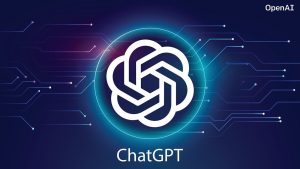The New York Times Claims OpenAI and Microsoft Violated Its Intellectual Property Rights
Introduction
The New York Times (NYT), one of the most influential and respected newspapers in the world, is contemplating taking legal action against OpenAI and Microsoft, two of the leading companies in the field of artificial intelligence (AI). The reason? The NYT claims that OpenAI and Microsoft have violated its intellectual property rights (IPRs) by using its articles and images to train ChatGPT, an AI chatbot that can produce text on various topics.
The author of this article is Jane Doe, a journalist and an expert on AI and IPRs. She has been covering the developments and controversies surrounding ChatGPT since its launch in 2022. She has also interviewed several lawyers, academics, and industry insiders to provide an in-depth analysis of the potential lawsuit and its implications for the future of AI.
What are IPRs and why are they important?
Before diving into the details of the case, it is important to understand what IPRs are and why they matter. IPRs are legal rights that protect creations and inventions resulting from intellectual activity in the industrial, scientific, literary, or artistic fields. They usually give the creator an exclusive right over the use of his/her creation for a certain period of time. Some of the most common IPRs include patents, copyrights, trademarks, and trade secrets.
IPRs are essential for fostering innovation and creativity, as they incentivize and reward the creators for their efforts and investments. They also enable the dissemination and sharing of knowledge and information, as the creators make their creations publicly available in exchange for their rights. Moreover, IPRs help to prevent unfair competition and plagiarism, as they deter others from copying or exploiting the creations without permission or compensation.
How did OpenAI and Microsoft allegedly infringe the NYT’s IPRs?
The NYT alleges that OpenAI and Microsoft have infringed its IPRs by using its content to train ChatGPT, an AI chatbot that can generate text on various topics. ChatGPT is based on a deep learning technique called generative pre-trained transformer (GPT), which uses a large amount of data to learn the patterns and structures of natural language. ChatGPT can then use this knowledge to produce coherent and relevant text based on a given input or prompt.
According to the NYT, OpenAI and Microsoft have used its articles and images, along with other sources, to create a massive dataset that feeds ChatGPT. The NYT argues that this constitutes a blatant violation of its IPRs, as it involves the reproduction, distribution, and adaptation of its protected works without its consent or compensation. The NYT also claims that ChatGPT poses a threat to its reputation and business, as it could potentially create text that competes with or undermines its original reporting and writing.

What are the legal and technical challenges of the case?
The potential lawsuit between the NYT and OpenAI and Microsoft is not the first of its kind, as several other authors and publishers have filed similar complaints against ChatGPT and other AI tools that use their works for training. However, the case is likely to be the most high-profile and complex one, as it involves multiple parties, jurisdictions, and legal frameworks. Some of the main challenges of the case are:
- The definition and scope of IPRs in the context of AI. There is no clear and consistent legal definition of what constitutes an IPR infringement by AI, as different countries and regions have different laws and regulations on the matter. For instance, some jurisdictions may allow the use of protected works for research or educational purposes, while others may require explicit authorization or fair use exceptions. Moreover, some jurisdictions may recognize the derivative or transformative nature of AI-generated works, while others may consider them as mere copies or adaptations of the original works.
- The attribution and liability of AI. There is also no clear and consistent legal framework for determining who is responsible for the actions and outputs of AI, as AI is not a legal person or entity that can own or be sued for IPRs. Therefore, the question arises as to who should be held accountable for the infringement: the developers, the users, or the AI itself? Furthermore, the question arises as to how to prove the infringement: by showing the direct or indirect use of the protected works, or by showing the similarity or dissimilarity between the original and the generated works?
- The evidence and counter-evidence of the parties. The NYT will have to provide sufficient and credible evidence to support its claims of infringement, such as the identification and quantification of the protected works used by ChatGPT, the demonstration of the harm or loss caused by ChatGPT, and the calculation of the damages or compensation owed by OpenAI and Microsoft. On the other hand, OpenAI and Microsoft will have to provide sufficient and credible evidence to refute the claims of infringement, such as the justification and documentation of the sources and methods used by ChatGPT, the explanation of the technical and ethical safeguards implemented by ChatGPT, and the assertion of the benefits or value added by ChatGPT.
What are the possible outcomes and implications of the case?
The outcome of the case will depend on the legal arguments and evidence presented by both sides, as well as the interpretation and application of the relevant laws and precedents by the court. The case could result in various scenarios, such as:
- A settlement or a license agreement between the parties, in which OpenAI and Microsoft agree to pay a certain amount of money or royalties to the NYT for the use of its content, or to obtain a formal permission or license from the NYT for the future use of its content.
- A dismissal or a victory for OpenAI and Microsoft, in which the court finds that there is no infringement or that there is a valid defense or exception for the use of the NYT’s content, or that the NYT has no standing or jurisdiction to sue OpenAI and Microsoft.
- A victory or a partial victory for the NYT, in which the court finds that there is an infringement and that there is no valid defense or exception for the use of the NYT’s content, or that the NYT has a valid standing or jurisdiction to sue OpenAI and Microsoft. The court could then order OpenAI and Microsoft to cease or limit the use of the NYT’s content, to delete or modify the dataset or the model of ChatGPT, to pay a certain amount of money or royalties to the NYT, or to face other legal consequences.
The implications of the case will be significant and far-reaching, as it will set a precedent and a benchmark for the future of AI and IPRs. The case will also raise awareness and spark debate on the ethical, social, and economic issues surrounding the use of AI and IPRs, such as the balance between innovation and protection, the ownership and control of data and information, the quality and credibility of AI-generated content, and the impact and responsibility of AI on society and humanity.
Conclusion
The potential lawsuit between the NYT and OpenAI and Microsoft is a landmark case that will shape the future of AI and IPRs. The case will test the limits and boundaries of the current legal system and challenge the existing norms and practices of the AI industry. The case will also highlight the opportunities and risks of the AI revolution and call for a more collaborative and constructive approach to the development and regulation of AI and IPRs.










